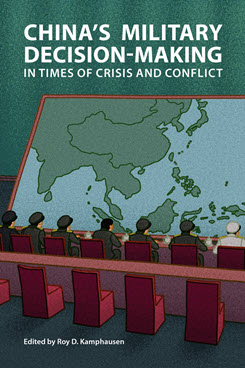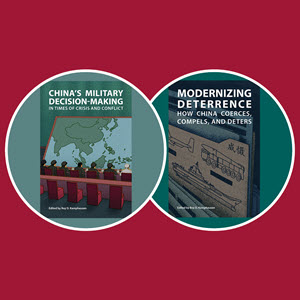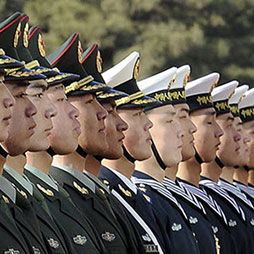Book from the People's Liberation Army Conference
Foreword to China’s Military Decision-making in Times of Crisis and Conflict
This is the foreword to the edited volume China’s Military Decision-making in Times of Crisis and Conflict.
I am privileged to present China’s Military Decision-making in Times of Crisis and Conflict, a superb set of papers that draws from the proceedings of the 2022 People’s Liberation Army (PLA) Conference cohosted by the National Bureau of Asian Research (NBR), the China Strategic Focus Group at U.S. Indo-Pacific Command, and the Department of Foreign Languages at the U.S. Military Academy at West Point.
The military capabilities of the People’s Republic of China (PRC) have expanded exponentially over the past two decades, and its leaders have demonstrated an increasing appetite to use these capabilities as coercive tools against the United States and its maritime neighbors in the western Pacific. Much has been written about the tactical and operational consequences of these developments. Understudied, however, is China’s crisis response decision-making and behavior. This volume addresses this critical knowledge gap.
There are three potential triggers of a crisis between Washington and Beijing that might include military forces and lead to dangerous escalation. First, the armed forces of the United States and its allies and partners routinely operate in close proximity to those of the PLA Navy and Air Force with the ever-present possibility of an accident exciting nationalistic sentiments. Second, both sides conduct robust operations in space and cyberspace, including with uncrewed and unmanned vehicles. This creates important domains and modes of warfare for which there are inadequate agreed-to rules of the road and increases the likelihood of one side misperceiving the intention of the opposite side. The third potential trigger is the possibility that President Xi Jinping might decide to employ the PLA preemptively to realize goals associated with his vision of “the great rejuvenation of the Chinese nation,” including actions to achieve control of the South China Sea or, even more worrisome, efforts to assert PRC sovereignty over Taiwan.
Chinese and U.S. civilian and military leaders, of course, understand that it is better to anticipate the inevitability of a bilateral crisis and put into place and practice communications protocols designed to contain and de-escalate before an unexpected day of reckoning. But for reasons brilliantly explained in this volume, efforts to do so have largely failed up to this point.
Thus, in the absence of substantive official Sino-U.S. dialogue on crisis avoidance and crisis management, one of the many merits of China’s Military Decision-making in Times of Crisis and Conflict is the contributing authors’ use of historical case studies, empirical evidence, and inductive reasoning, often grounded in primary PRC sources, to make persuasive arguments about how Beijing might approach and act at a time when the stakes verge on existential.
Although, as mentioned, this superb compendium of papers authored by some of the best global analysts of PRC security and military strategy draws from the 2022 PLA Conference, its implications are intragovernmental, international, and academic in nature. I highly commend this volume to an eclectic group of readers, including those in the U.S. Departments of State and Defense, Armed Forces, and intelligence agencies; academics, students, and media analysts trying to better understand Chinese crisis management doctrine; and international officials and academics focused on PRC foreign policy goals and Beijing’s relevant playbooks.
Showing my experience (or age), I first traveled to the then Republic of China—now in official parlance Taiwan—in 1971 while a member of the U.S. Military Academy Chinese Language Club. In my opinion, China’s Military Decision-making in Times of Crisis and Conflict is one of the most insightful and useful policy-relevant publications written over the five decades since that very different time and era.
Karl Eikenberry
Former U.S. Ambassador and Lieutenant General, retired, U.S. Army
September 2023



 Assessing U.S.-China Deterrence Dynamics and Crisis Management
Assessing U.S.-China Deterrence Dynamics and Crisis Management
